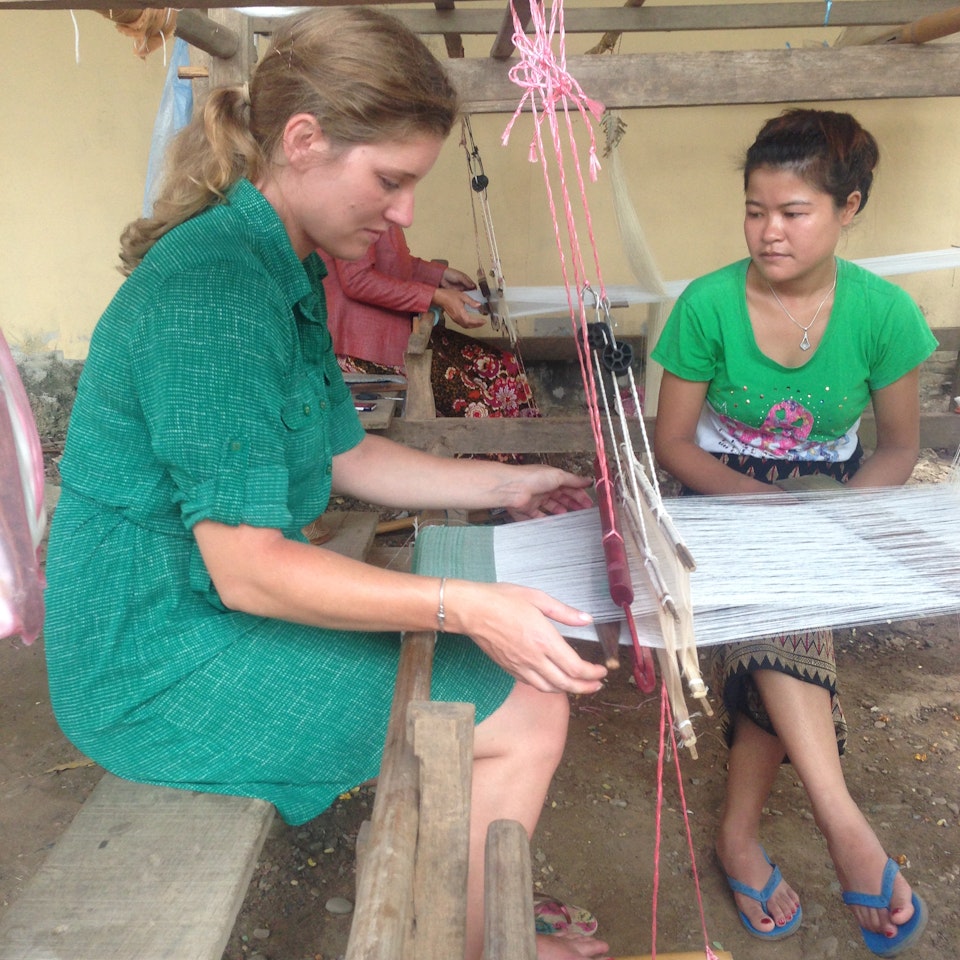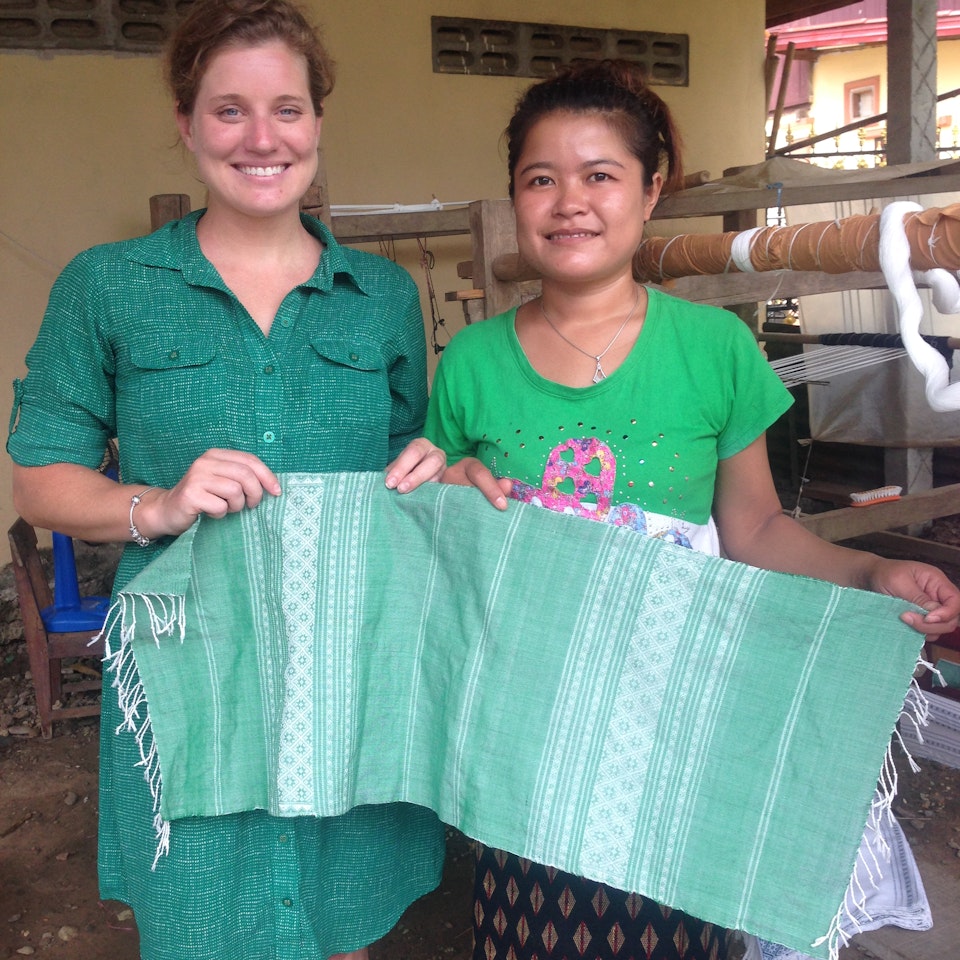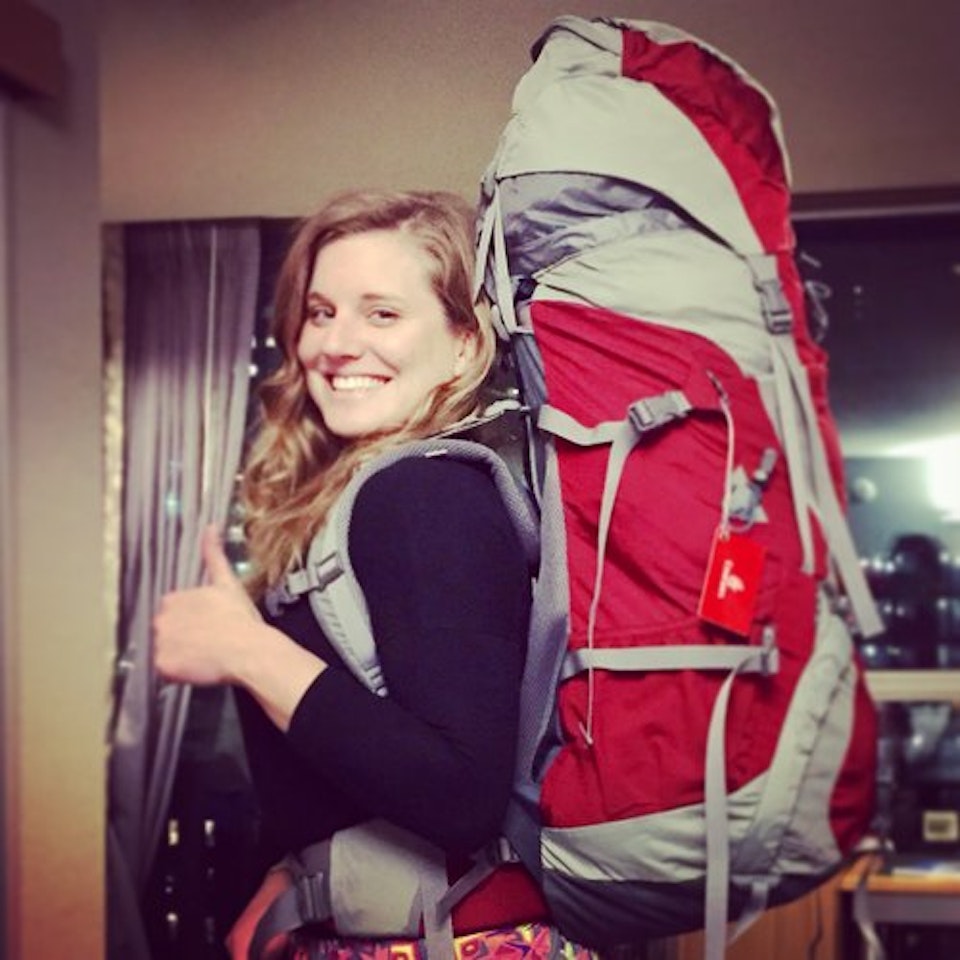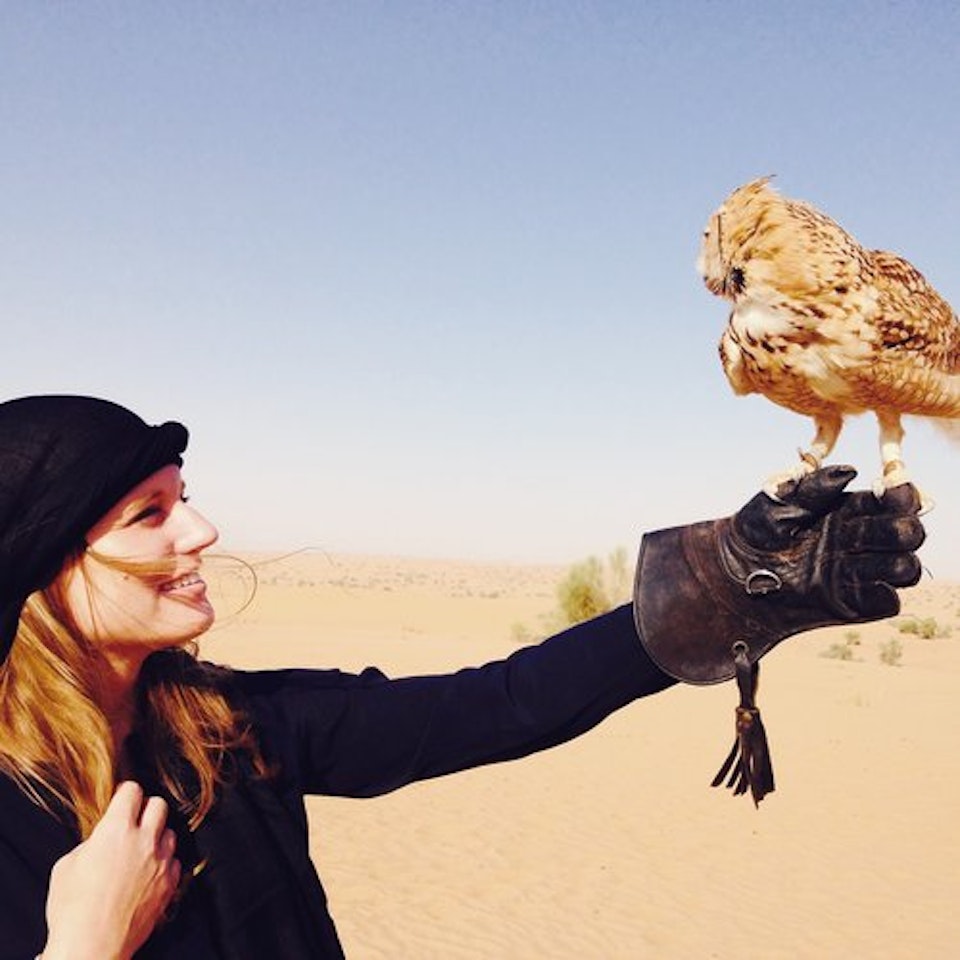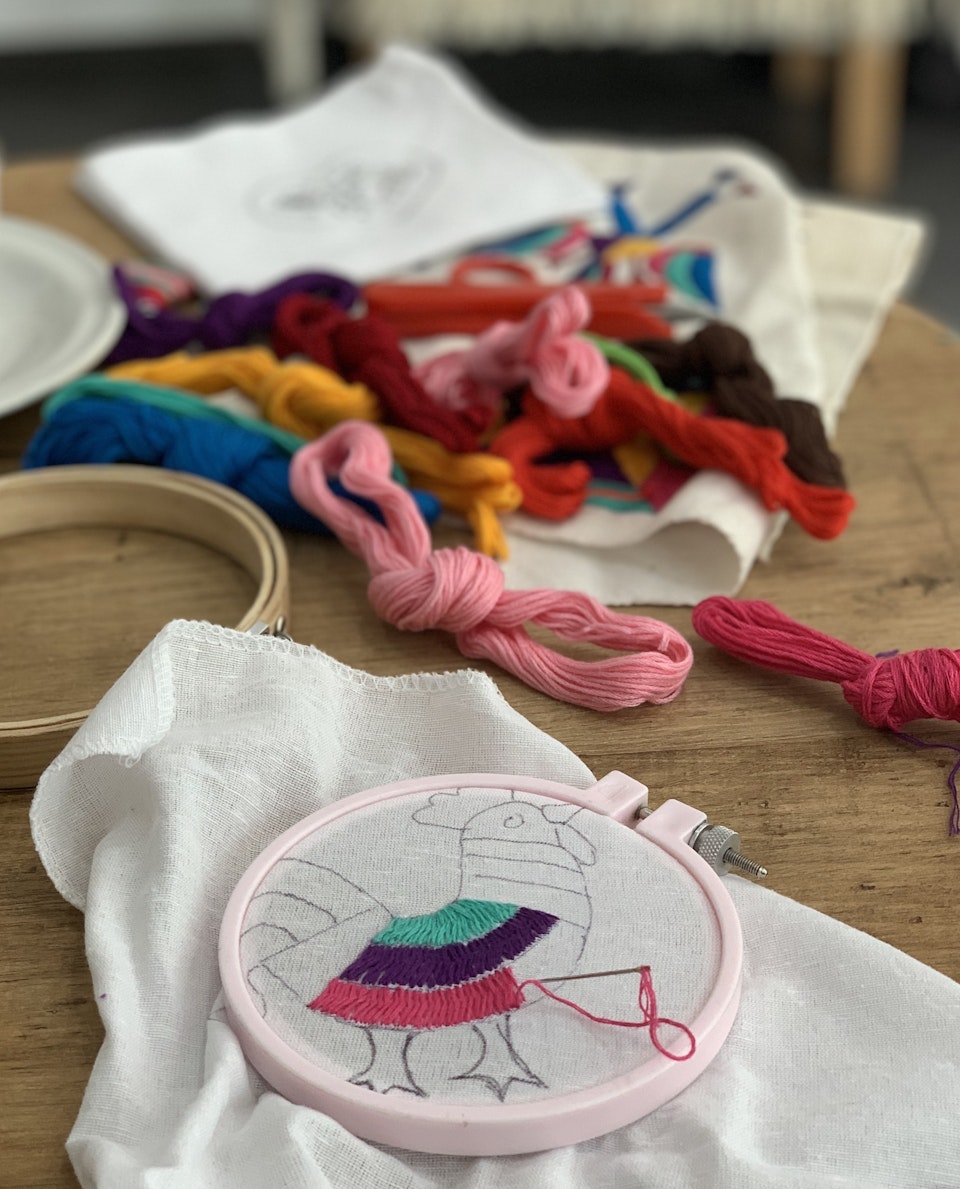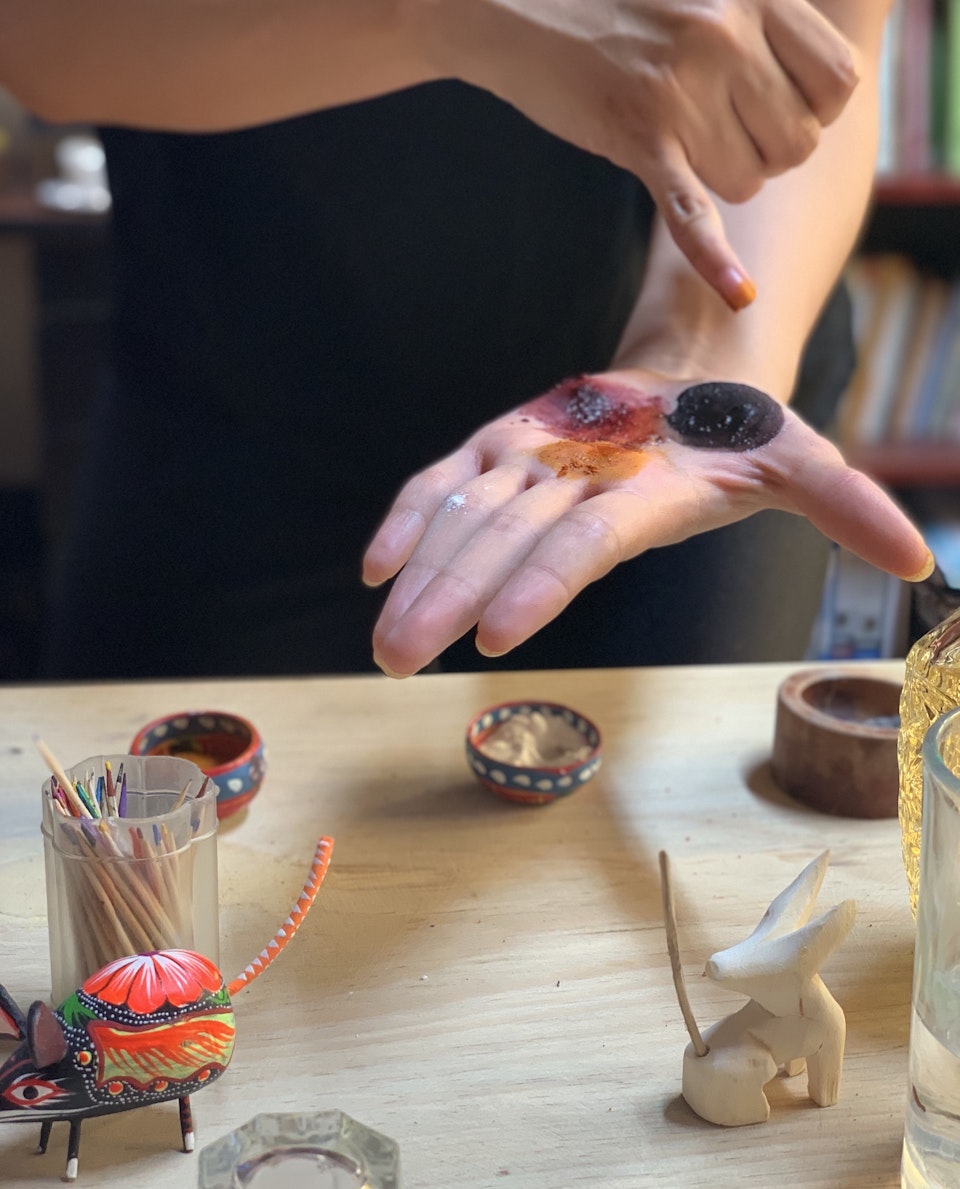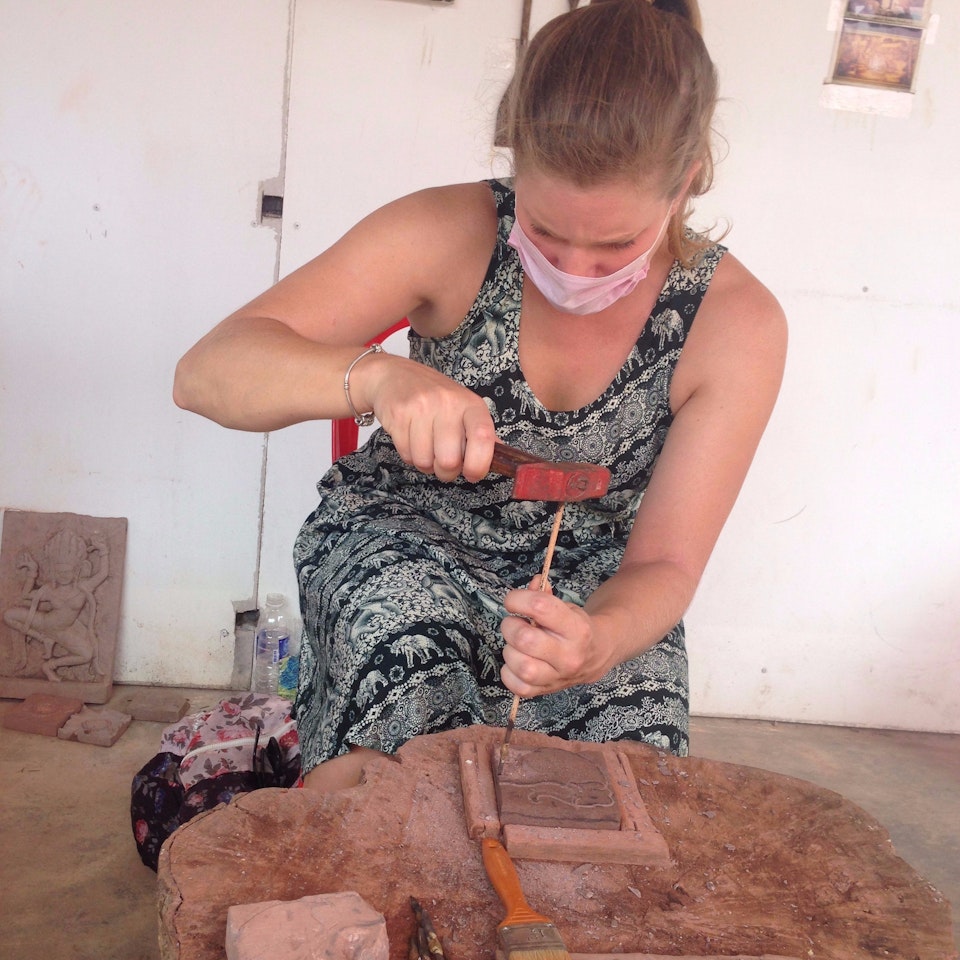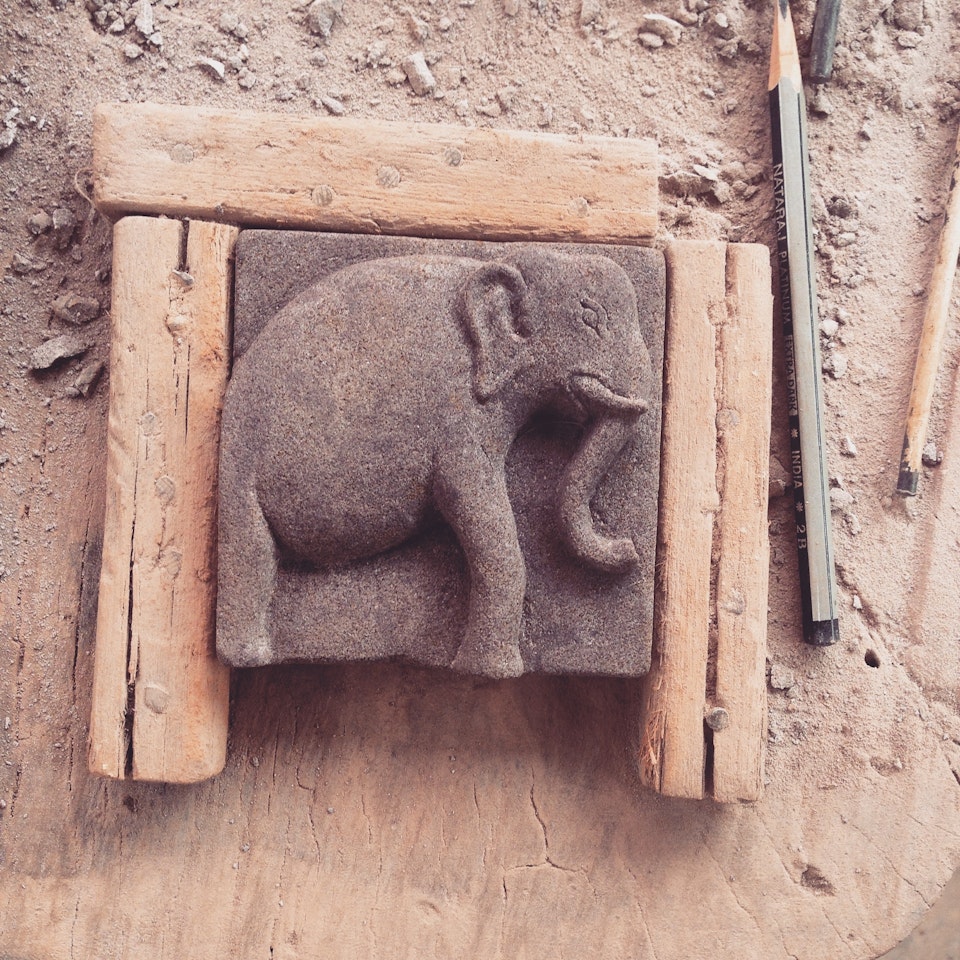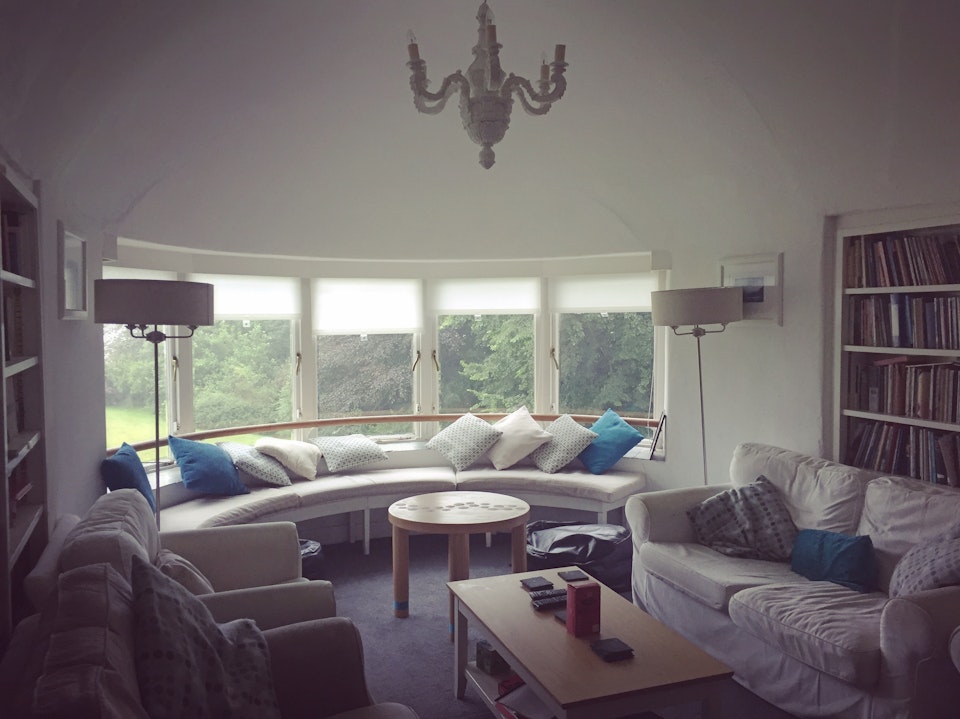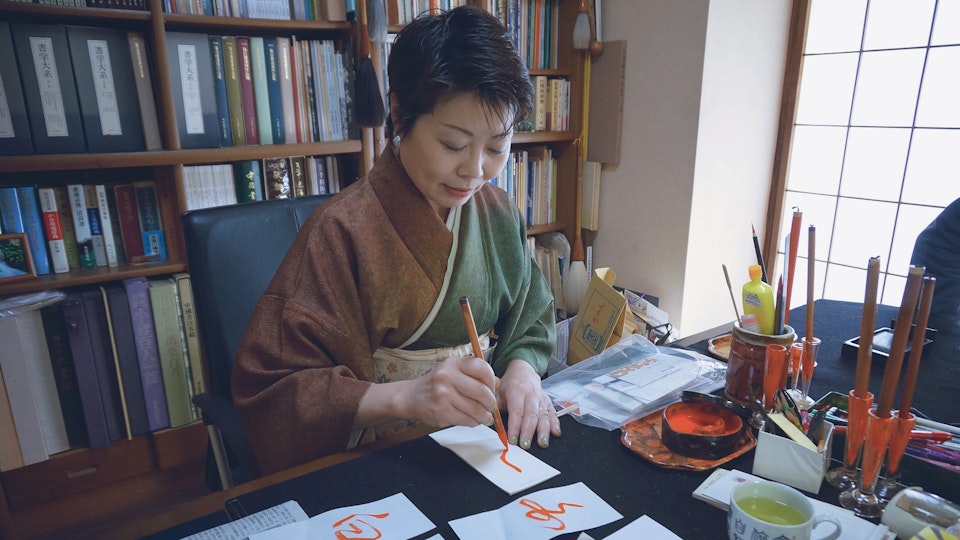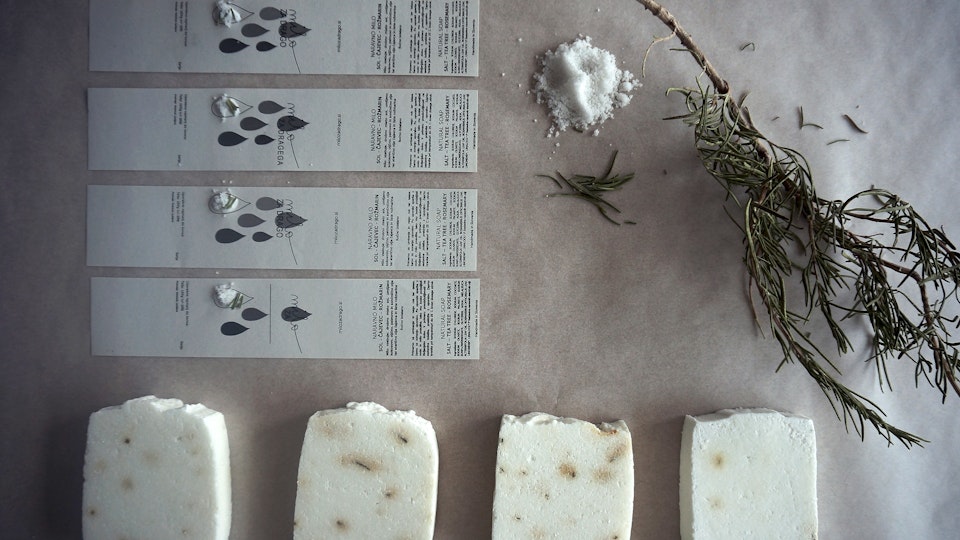July 08, 2019
Art Experiences for Travelers and Digital Nomads
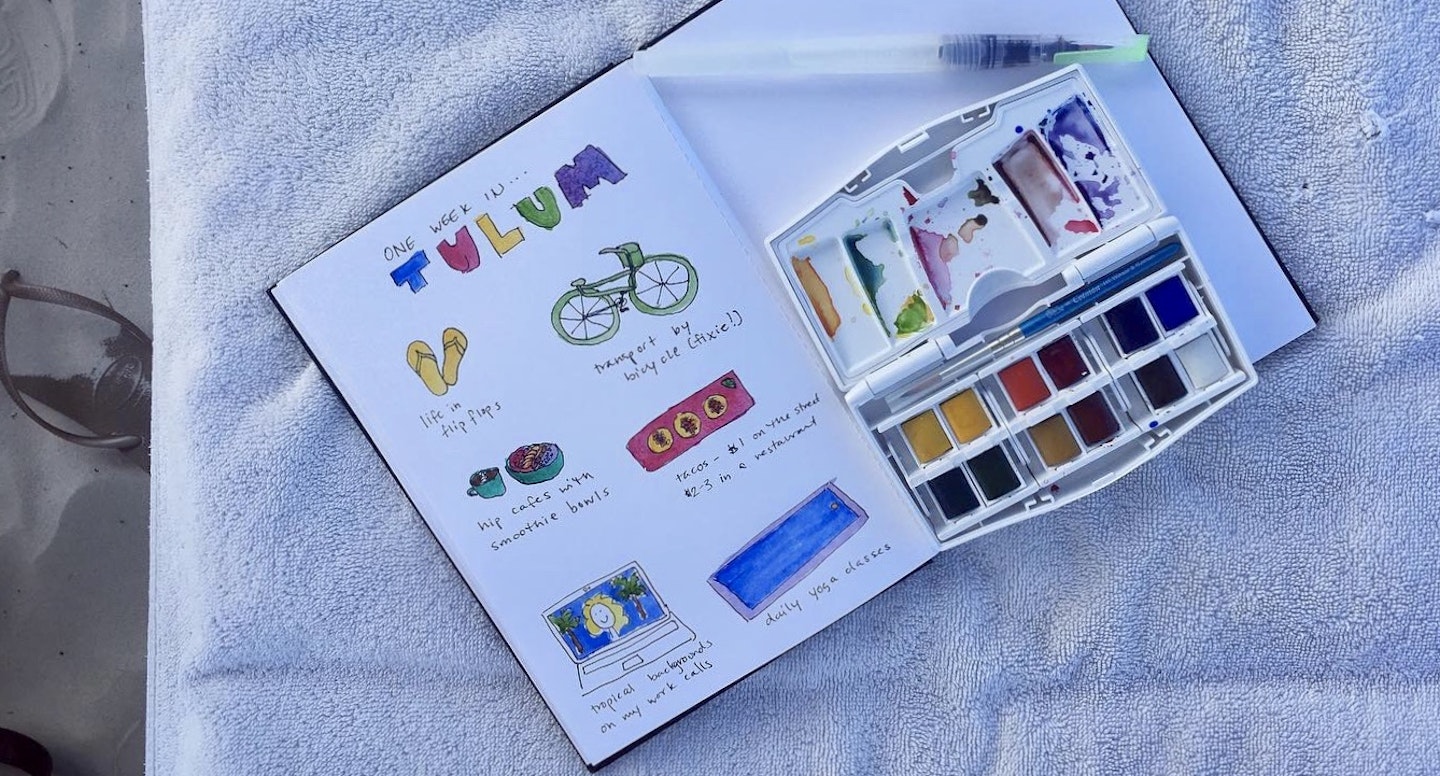
One warm July morning in 2015, a high school student arrived in a tuktuk to my guesthouse in Luang Prabang, Laos. He was my translator, and we headed to the home of Lae, a young local woman who was a skilled weaver and had her own loom. That day, she helped me make a small silk scarf, green with a white pattern.
It took me hours to create, hunched over a loom that I was far too large for, learning the rhythms of the shuttle and pedals as she guided my work.
It was not a perfect scarf. But it had emerged from my hands thanks to a kind of mechanical magic that transformed threads into fabric. Ever since, I’ve regarded the many handwoven scarves I see in markets differently, thinking of Lae and her daily labors.
Weaving with Lae in Luang Prabang, Laos, 2015. Courtesy of Katherine Conaway.
A digital life needs digital detox
I wasn’t on vacation that day in Laos. Nor was I a student abroad or away on business.
I work remotely while traveling the world – and the loose community I’m somewhat part of is often referred to as digital nomads.
Exactly what that term implies for each person varies widely, but the most basic tenets are that we work via technology, and we live and move around in places that aren’t our home cities or countries.
My curiosity and compulsion to observe and experience new things pushed me first to leap from Texas to Massachusetts for college. I went off to Italy for a semester abroad. Then I lived in Morocco, Switzerland, and Bulgaria, working as a teacher. Eventually, I moved to Brooklyn to work in production at a digital design agency.
And now, for five years and counting, I’ve lived like a snail – my home on my back, all my clothes and daily belongings packed in a few pieces of luggage.
I’ve taken myself around the globe, through more than 50 countries across the Americas, Europe, Africa, and Asia, spending anywhere from a few days to a few months in each place, all while maintaining my client work and an income to support myself.
It’s an incredible lifestyle, for which I am very grateful.
Bag packed and ready to head to India for yoga teacher training with my mom (left), and learning about falconry and owls in the desert of Dubai (right), both in 2015. Courtesy of Katherine Conaway.
But it’s not without its challenges.
Like most people in today’s modern world, digital nomads are hyper plugged in to our devices. I may be geographically far from my home country, but most of my hours are spent connected to the USA via screens – hunched over my computer for work and then peering at my phone to keep in touch with friends and family.
In spite of all that technology enables in my life, the best parts of my days and weeks are when I’m offline.
"I am increasingly drawn to learning little bits about local crafts, tasks, and customs. I look for a way out of the classic tourist domain and into someone’s authentic reality; it makes the trip more than just a hedonistic endeavor – it becomes an opportunity to witness, learn, and grow."
Embroidery workshop (left), learning about natural pigments at an Alebrije painting workshop (right), both in Oaxaca, Mexico in 2019. Courtesy of Katherine Conaway.
The value of curiosity and creative sabbaticals
I love hopping on a bike to explore town, tasting the signature treats, sightseeing and learning about the local culture. Of course, this is a key part of travel – actually experiencing the place.
But the natural urge to see and do as much as possible, plus the added pressure of social media documentation, encourages us to rush through a sightseeing checklist, pausing only for a photo. Once we let ourselves linger a bit, however, we discover the joy of soaking up a place.
And the more time I spend away from my devices, fully in the world and on my own, the more I strengthen my mental clarity and creativity. With some space and diverse inputs, my brain has the opportunity to draw conclusions and connections again.
Working on something analog with my hands is often even better – not least because it’s simply a relief to finally make a real thing in the actual human world (versus all these virtual squiggles). Whether it’s a cake or a drawing, even my mediocre attempts are fulfilling.
And those kinds of activities actually help us process other problems (the old best-ideas-in-the-shower phenomenon), so that investment in slowing down, taking time, and making something is tangibly rewarding across our personal and professional lives. (Just in case you needed the reassurance that it’s really worth it.)
Incorporating art apprenticeships into our travels
These creative sabbaticals can be brief or span days, and happen within formal structures, like classes or workshops, or via personal connections, or as self-taught explorations.
Art supplies are generally available around the world, and I’ve created a few small sets of my own so that I can practice a creative skill in my free time – travel watercolors and journals, embroidery yarn and a miniature sewing kit – consulting Instagram and YouTube when I need guidance or examples to reference.
When it comes to scheduling a short workshop or a set of classes, there are usually options for days, nights, or weekends. In an ideal world, I do one a week, typically spending $20-50 per a few hours of instruction.
While I often pursue activities or lessons that I’m particularly interested in, I also find that the seemingly random ones end up offering me the most meaningful insights into the culture.
A week after that weaving class in Laos, I signed up for stone carving in Siem Reap, Cambodia, which I attended between visits to Angkor Wat. Khet, my craftsman instructor, showed me how to make a little elephant out of the same local stone used on the temples.
When I returned to the Angkor complex the next day and examined the carvings that covered hundreds of square feet of temples, the time and skill was much more obvious and appreciable after my own small attempt.
Stone carving in Siem Reap, Cambodia, 2015. Courtesy of Katherine Conaway.
For a longer creative endeavor or art retreat, a bit more planning and budgeting may be required. But those experiences are typically designed to be an immersive vacation, allowing a visitor to work like and with a practicing artist.
The personal development, studio space and supplies, and intimate instruction from an artist are what makes VAWAA and similar artist apprenticeships so valuable. The time in the studio, which is sometimes also the instructor’s home, is almost as appealing to me as whatever I’ll be making. I love peeking behind the wizard’s curtain, and relaxing into quiet hours spent with someone in their unique environment.
A couple years ago, I went to a weeklong writing workshop in Wales (alliteration unintentional). I was amazed at how quickly our group of strangers bonded, and at the improvement in my work after a few days of continued practice, revisiting and iterating upon something with only hours between sessions instead of months or years.
We all stayed on the property and had various voluntary tasks on rotation for meals, which meant that the five days were spent completely encompassed in our tiny community and the beautiful house and grounds. That week was a retreat in every way, and I loved it.
Writing workshop at Ty Newydd in Wales, 2017. Courtesy of Katherine Conaway.
Japanese Calligraphy with Chikako in Kyoto. Courtesy of VAWAA.
Salt Soap Making with Anja in Slovenia. Courtesy of VAWAA.
Ultimately, we’re creative, communal creatures. And we not only enjoy but need to make.
Luckily for us, whether we’re at home or on the road, there are more options, more easily available than ever before to indulge and develop our creativity, and our connection to the physical world.
Written by Katherine Conaway
Katherine Conaway is a freelance writer, consultant, and producer. She’s been a digital nomad since June 2014, working remotely while traveling full-time. She has visited more than 50 countries so far, across Europe, Africa, Asia, and the Americas, and is the author of The Digital Nomad Survival Guide. Katherine is passionate about learning, art, culture, and stories.
Browse all VAWAA Artists here.
For more stories and new artist updates, subscribe here.
